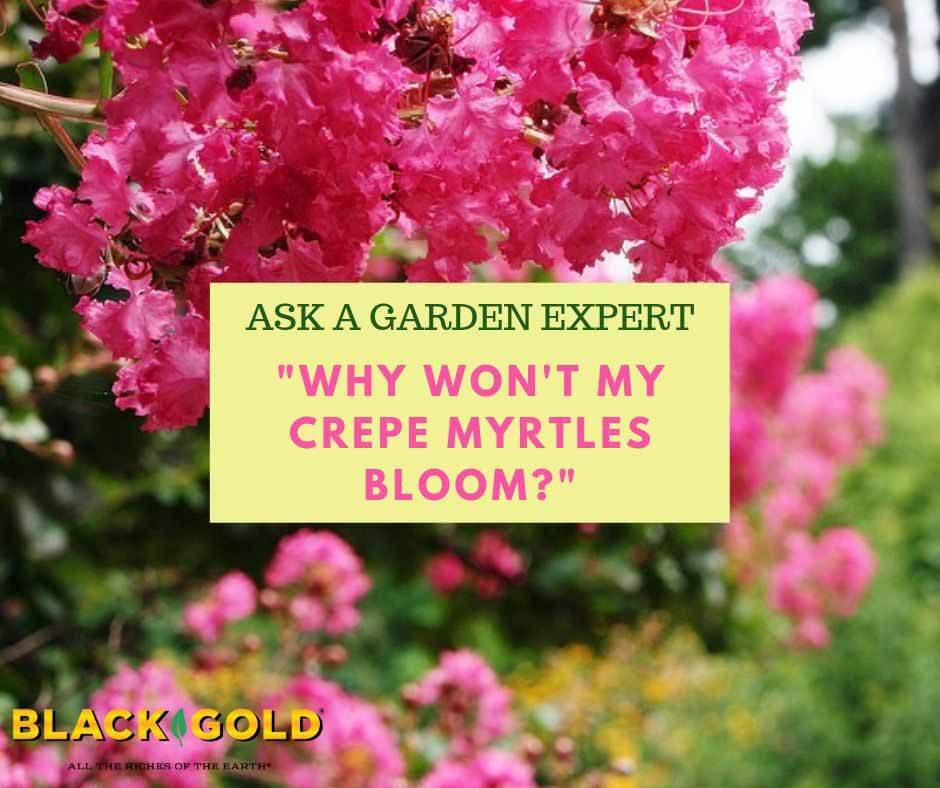
“My crepe myrtles don’t bloom. I’ve added “blossom booster,” but still no blooms. Any suggestions?” Question from Carol of Douglasville, Georgia
Answer: How frustrating! You plant one of these glorious flowering shrubs/trees and…no flowers. There are a few possible reasons why yours won’t bloom for you.
- Light – One of the most common reasons is too little light. Crepe myrtles (Lagerstroemia indica) are sun lovers that need high light to bloom well. If yours gets a good bit of shade, little to no blooming can result.
- Food and Soil – Well-drained soil enriched with organic matter (peat moss or compost) will also encourage good growth and blooming. Fertilizer is also important. I would choose a slow-release fertilizer formulated for flowering. Work it in around the root zone at the beginning of each season.
- Heat and Water – Parched summers that are extra hot can put a strain on these plants and reduce flowering. Does yours look otherwise healthy? If not, I would provide it with additional water when the summer weather is at its worst. Likewise, prolonged excess moisture can cause poor growth and root rot.
- Disease – Several crepe myrtle diseases can put a damper on health and flowering. Powdery mildew, which appears like a whitish powdery dust on leaf surfaces, stresses plants and negatively impacts flowering. Likewise, Cercospora leaf spot, which results in spotty leaves that fall prematurely, can reduce flowering. If you suspect mildew, look into the effective fungicide, GreenCure. For leaf spot, try a copper-based fungicide spray. To reduce the impact of both diseases, prune out dense, internal branches to encourage airflow, and be sure to clean up fallen leaves in autumn.
- Variety – Consider the variety. Some are more reliable than others. If yours just won’t flower well, then choose a tough, reliable variety with excellent flowering performance. I recommend three vigorous, disease-resistant varieties: the deep-red flowered Dynamite®, brilliant pink ‘Hopi’ and lavender-violet ‘Zuni’.
I also recommend that you contact your local UGA Extension Agent to get more tips for your growing area.
Happy gardening,
Jessie Keith
Black Gold Horticulturist
